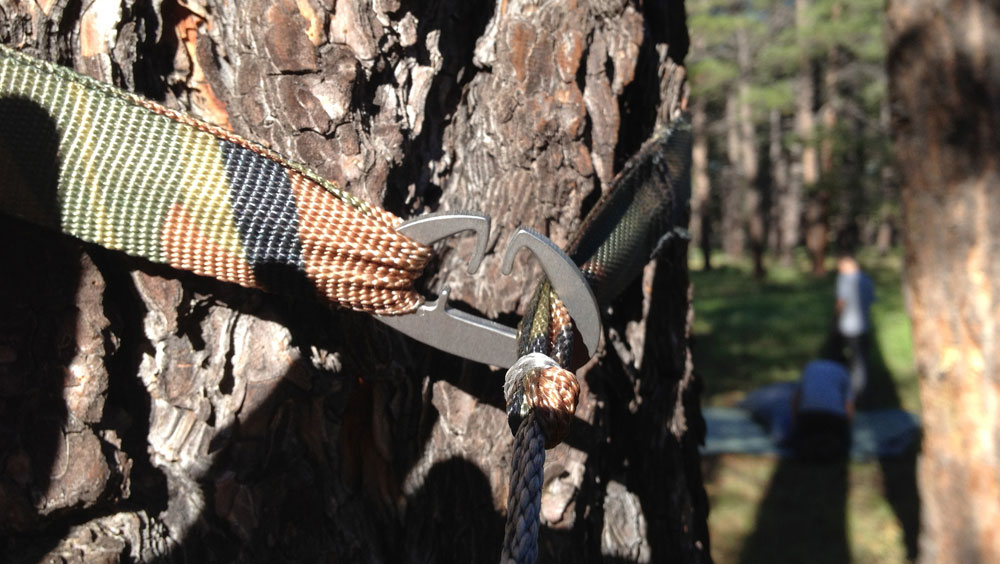Dutch sent me an email about a new product he was working on. I was surprised when I opened the package to discover a titanium Dutch Clip, or the Dutch Clip | ti. The design is, of course, updated—sleek and refined. At first, I wasn’t sure how to use them. The size and form is so much different than the original, aluminum Dutch Clip. The form is much more in line with a mini carabiner without a gate or mechanism. This new, rounded shape lends itself better, in my opinion, to the webbing straps, but allowing the material to bend around the metal without potential abraision.
The weight for the pair of clips is only 16 grams.
I took them backpacking and I can say I’m already converted. As I mentioned, the inner curve works nicely with the webbing strap and the clip made it very easy to attach around the tree.
There are two important things to remember when you use Dutch Clips:
- The webbing strap must come off the side of the tree/anchor and not in the center. This reduces the force on the clips and maintains their weight rating.
- The suspension must come off in a 30° angle from the tree/anchor. The Dutch Clips are not designed for hammocks with structural or integrated ridge lines and suspension systems where the suspension is pulled nearly taut across the anchor points. This puts too much strain on the clips and will easily exceed their weight rating.
Dutch mentioned that he is working to get these items on his website within the next week.








Leave a Reply